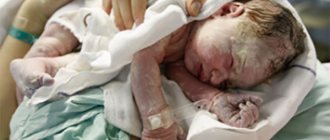Schizophrenia is a mental disease that is characterized by disturbances in thought processes and loss of mental capacity. This disease affects 1% of the entire world population. Recognizing the signs of schizophrenia in women by behavior is quite simple; in the early stages, the disease announces itself with specific symptoms
.
Clinical picture
According to experts, there is a certain age at which the first signs of the disease appear. Most often, mental disorder is diagnosed between the ages of twenty and twenty-five. The onset of the disease at a younger or older age is much less common. The first signs of schizophrenia in women completely change their behavior.
Obsessiveness, mood swings, increased irritability and the manifestation of groundless aggression are the main symptoms of a mental disorder. The clinical picture is complemented by such elements as attacks of hallucinations, emotional detachment, loss of interest in life and delusional ideas.
Often, the first signs of a mental disorder are expressed in the appearance of obsessive fear and senseless actions.
An example would be a situation in which a woman wipes a chair several times before sitting on it. Immersion in one's own thoughts is accompanied by complete detachment from reality and the absence of actions that can be explained from a logical point of view. Often the disease in question manifests itself in the form of fear of various diseases.
In such a situation, a woman begins to attribute various symptoms to herself. Parasites migrating to various parts of the body, rotten internal organs, reverse blood circulation are just a small part of the fantastic diseases that patients with schizophrenia attribute to themselves.
Such a problem as constant fatigue and drowsiness in women is a common phenomenon that should not be left to chance. It is often a symptom of physical or psychological illness that requires treatment. Read more in the article: “constant fatigue and drowsiness in women.”
Diagnostics
To establish an accurate diagnosis, the patient must be regularly monitored for 2-4 months. At this time, the doctor collects an anamnesis of the disease, identifies the general clinical picture, and differentiates the type of schizophrenia. To clarify the diagnosis, neurotests and neuropsychological systems are additionally used. In each specific case, the psychiatrist selects treatment , depending on the individual characteristics of schizophrenia, its form and symptoms, which come to the fore.
How to recognize schizophrenia in women?
Diagnosing schizophrenia in women is quite simple.
.
To do this, the doctor just needs to observe the woman’s behavior for several weeks. If he notices that her personality is beginning to change, this is a good reason to start therapy. This psychological deviation can also be recognized by a detailed history. Usually the first harbinger of schizophrenia is the appearance of obsessive ideas that the woman had not even thought about before. You can recognize this deviation in the generation station by:
Advertising:
- sudden emergence of feelings of jealousy towards your loved ones;
- paranoia, the woman thinks that everyone is watching her;
- neglect of all household chores;
- failure to comply with personal hygiene rules;
- desire to quit work and dramatically change your lifestyle.
Women are more susceptible to developing schizophrenia, this is due to a more mobile and unbalanced psyche.
Over time, the signs of schizophrenia become more and more pronounced. It becomes difficult for a woman to cope with her emotions; she does not show them in any way. People around her begin to think that she doesn’t care. Because of this, serious problems can arise both in the family and at work. Many women lose interest in their husbands and children and try to ignore them. Also, with the development of schizophrenia, a woman becomes extremely indifferent and carefree, she is indifferent to any problems.
Doctors consider cystitis a female disease. Men also get it, but much less often. More than 50% of women have encountered this unpleasant disease at least once. Read more in the article: “how to quickly cure cystitis in women.”
Personality characteristics
It has been established that pathology more often develops in women with poor emotional reactions and who are not accustomed to the vivid expression of both positive and negative emotions. Upbringing and relationships with parents play an important role in this. Psychosis is often diagnosed in single women who, due to their complex nature, cannot form a family or maintain long-term relationships with the opposite sex.
Groups of symptoms of schizophrenia
When defining schizophrenia, it is very important to distinguish between the signs and symptoms of this disease. For many diseases these parameters are identical, but for this mental disorder they will be different. Modern experts use the Blair tetrahedron to determine symptoms. There are stronger and weaker manifestations of schizophrenia. In general, to determine this lesion, the following signs must be assessed:
Advertising:
- Alogia
, or associative defect. This is the primary manifestation of schizophrenia, which consists of a lack of logical thinking. The woman becomes incapable of the thought process, which is why she starts asking a lot of questions. This manifestation is also characterized by a poor vocabulary and the use of short and incomplete sentences. - Autism
. This sign can be recognized by a change in a woman’s behavior; she becomes more withdrawn and moves away from the world around her. She also becomes indifferent to the lives of her loved ones and immerses herself in her own world. However, her interests become monotonous and limited. - Affective inadequacy
. It can be recognized using simulated situations. If a woman begins to behave inappropriately, there is a high risk that she actually has schizophrenia. Also, many reactions in patients are inappropriate: laughter at a funeral or tears during some holiday. In such cases, the expressed emotions do not coincide with internal experiences. - Ambivalence
. This symptom is characterized by the fact that a woman simultaneously experiences conflicting feelings towards the same object.
The signs listed above are positive. However, it must be borne in mind that they are not the norm. They received this designation due to the fact that a woman acquires such changes as schizophrenia develops. If you notice changes in behavior in your loved ones, consult a doctor immediately.
[media=
https://youtu.be/-I1wEVnVi78
]
Negative symptoms of schizophrenia
This type of symptoms of this psychological deviation is characterized by the loss of any qualities. They usually begin to fade after the disease manifests itself. A person begins to notice that his physical strength is leaving him, he becomes indifferent to the world around him, lacking initiative. Negative symptoms of this mental disorder include:
Advertising:
- constant desire for loneliness and loss of will;
- frequent mood swings;
- apathy, constant thoughts;
- passive behavior and emotional poverty;
- impaired coordination and thinking;
- affective flattening;
- low initiative;
- lack of will, low motor activity;
- low level of self-control;
- disturbances in thinking and sequence of actions;
- inability and unwillingness to maintain dialogue;
- dissatisfaction with life, lack of desire for self-development.
If you begin to notice any changes in behavior in your loved one, talk to him and insist on visiting a psychologist.
Recognize schizophrenia in its early stages
possible according to a certain set of manifestations. If a woman remains in a depressed mood for a long time, refuses to communicate, tries to stay alone longer, or has become secretive, this is a good reason to consult your doctor for advice. She also begins to neglect basic hygiene rules, which she had not observed before, it is also worth visiting a doctor.
Depressive female psychosis
It usually manifests itself in adulthood (30–35 years). The initial stage of the disease is accompanied by:
- general decrease in tone;
- feeling of irresistible fatigue, weakness;
- feeling of physical and emotional powerlessness;
- apathy;
- loss of a sense of joy, inability to have fun (this often becomes the cause of alcohol abuse, narcotic psychostimulants);
- indifference to any activities or hobbies that previously brought pleasure.
The next, cyclothymic stage is accompanied by a worsening of existing symptoms. Appears:
- yearning;
- indifference to one’s own appearance, clothing, home furnishings;
- decreased self-esteem, feelings of shame and guilt (often without apparent reason) for one’s words and actions;
- anxious premonitions, a feeling of hopelessness.
Somatic signs are also typical:
- dryness and flaking of the skin;
- pale skin;
- decreased sweating;
- the appearance of deep facial wrinkles;
- brittle nails, hair loss;
- weight loss;
- menstrual irregularities, amenorrhea;
- discomfort in the heart area;
- shortness of breath, shallow breathing.
In severe cases, the formation of stable delusional ideas is possible, and the plot of delusion is dominated by self-accusation, self-deprecation, fear of death, ruin, fire, etc. Expressed hypochondria, excessive, pathological concern about one's own health. In some cases, a woman completely unreasonably blames herself for the misfortunes of her loved ones, friends, any troubles at work, etc.
Common signs of schizophrenia in women
The peculiarity of the development of schizophrenia in women is that it develops gradually. Unlike men, the symptoms of such a mental disorder grow slowly and do not appear at once. If you pay close attention to the condition of your loved ones, you will easily recognize this pathology in them. First of all, the following signs appear:
Advertising:
- Speech disorders
- an elderly woman begins to use monosyllabic phrases, her vocabulary is poor, and she makes a huge number of mistakes. - Apathy for life
, neglect of the rules of personal hygiene - a person does not see the point of doing something that will need to be repeated after a certain period of time. - Low emotionality
. You can recognize a woman suffering from schizophrenia by her lack of expressiveness, her constantly stony face, and her avoidance of eye contact with her interlocutor. - Anhedonia
is a loss of interest in objects or objects that previously aroused delight and attraction in a person; - Low concentration
, loss of concentration.
If a woman develops paranoid schizophrenia, she becomes more suspicious, cautious, and develops paranoia. Also, the patient can easily notice emotional inadequacy, which worsens as the disease develops.
Treatment
Treatment of schizophrenia in women is aimed at eliminating productive and negative symptoms . At the Balance clinic, an individual approach is used to each patient. A comprehensive therapy is being developed for her, consisting of a course of medication, psycho- and family therapy.
If a patient comes to us with an attack of acute psychosis, we insist on treatment only in a hospital setting. This will help us monitor her condition around the clock, make timely adjustments to the course of therapy - change medications and their dosages to achieve a better result.
We treat schizophrenia in women using:
- neuroleptics - they help cope with obsessions, hallucinations, outbursts of anger and irritability;
- antipsychotics aimed at restoring cognitive abilities and volitional functions;
- antidepressants that eliminate signs of depression and apathy;
- tranquilizers to reduce psychomotor agitation and normalize emotional reactions.
Elimination of productive symptoms takes from 4 to 8 weeks. When the stabilization stage is reached, the patient is transferred to outpatient treatment and supplemented with a course of psychotherapy and family therapy.
In individual sessions, the patient learns to accept her illness, live with it and not be ashamed of it. The result of conversations with a psychiatrist is the patient’s awareness of the groundlessness of her fears and obsessions. At group trainings, the patient restores her communication abilities - learns to re-build a dialogue, express her thoughts through coherent speech.
Her immediate environment plays a big role in a woman’s recovery. During family therapy sessions, relatives are taught how to properly communicate with the patient, what words and emotions to use. Relatives should create an atmosphere of comfort and tranquility in the house and surround the patient with sincere attention and care. It will also be the responsibility of those close to you to regularly monitor the woman’s pill intake and compliance with all doctor’s recommendations.
Schizophrenia is a chronic illness . Therefore, even if a state of remission is achieved, the patient will have to constantly take medications, albeit in smaller quantities and dosages. This measure will help avoid relapse.
Symptoms of schizophrenia in pregnant women
Girls aged 20-25 years are more susceptible to developing schizophrenia.
.
This age is considered the most common among pregnant women. During this period of life, a woman’s body experiences enormous stress; almost everything in it changes. Against this background, mental disorders often arise. This disease can be recognized in pregnant women by the appearance of:
- psychotic-like behavior;
- obsession and jealousy;
- hallucinations and delusions;
- indifference, apathy;
- sudden aggression and excessive irritability.
You can recognize the prerequisites for the appearance of schizoid changes in the psyche of pregnant women by the emerging fears, strange and sometimes thoughtless desires. A person is completely immersed in his experiences, without paying attention to the world around him. This can manifest itself in strict adherence to various rituals; the pregnant woman becomes very careful. She develops irrational fears about her health, she begins to diagnose herself with many serious, sluggish pathologies.
Psychotrauma
How exactly a woman reacts to traumatic situations is determined by her character, life principles, social and financial status. Thus, some people perceive, for example, a loss of job or a delay in salary quite easily; for others, such unpleasant events can cause prolonged depression.
But the most common etiological factors of psychotic disorders are:
- emotional and/or physical abuse;
- serious illness, death of loved ones;
- global disasters, pandemics, crises;
- accidents;
- diagnosed pathology (we are talking about incurable or difficult to treat diseases), etc.
Condition after childbirth
Certain changes occur in a young body after childbirth. Therefore, girls of this age who have given birth may be subject to varying degrees of development of schizophrenia if they have a predisposition to it. After giving birth, women may develop schizophrenia due to severe stress that affects their physical and psychological state. But this is an extremely rare occurrence. The following factors can lead to the development of schizophrenia after childbirth:
- loneliness;
- depressed state;
- postpartum depression;
- hereditary predisposition to the disease;
- lack of communication with other people.
A mental disorder in a woman who has given birth to a child is difficult to ignore. It is characterized by pronounced symptoms, which are not typical for a healthy person. The woman refuses to accept her child and fulfill new responsibilities. During this period, pathological delirium is often observed in patients.
After the symptoms of schizophrenia subside, women are left with a feeling of alienation towards their own baby. To cope with unpleasant symptoms and disease, a woman will need to undergo a course of drug therapy. Close people should help her in every possible way to achieve recovery. If they begin to pull away, the patient’s condition will worsen significantly.
Causes of schizophrenia in women
Schizophrenia is completely curable only if you begin treatment in the initial stages of the disease. To prevent a serious mental disorder, you need to know what can lead to such a disorder. Among the most common causes of schizophrenia are the following theories:
Advertising:
- Neurotransmitter
- it comes down to the fact that the disease develops as a result of a long-term increase in the level of dopamine in the blood. - Serotonin
- its essence lies in the fact that the deviation is formed against the background of overly active work of serotonin receptors. - Noradrenergic
— schizophrenia in this case develops against the background of increased levels of adrenaline, dopamine and norepinephrine in the blood. The noradrenergic system is responsible for their production. - Cognitive
- a mental deviation of this type is caused by external biological factors that a woman is not able to independently influence. - Psychoanalytic
- with this nature of deviation, schizophrenia begins to develop against the background of a split personality. - Dysontogenetic
- its essence boils down to the fact that a person from birth has a predisposition to develop a mental disorder. - Predispositions
- if at least one parent of a woman suffers from schizophrenia, her risk of developing this pathology increases 10 times. If both parents suffered from it, the probability of a mental disorder is 80%. - Autointoxication
- some scientists believe that abnormalities in the functioning of the psyche can be caused by protein breakdown products that cannot be completely digested by the body.
Schizophrenia is a serious mental disorder that affects a person’s normal life. In the absence of proper treatment, a woman in advanced stages of the disease develops obsessive ideas to commit suicide or injure herself in order to save her loved ones.
Causes of the disease
Schizophrenia begins to develop as a result of a disturbance in the exchange of neurotransmitters - signaling molecules that ensure interaction between brain cells.
Despite the fact that the disease can be inherited, it is not always associated with this factor. Of all the reasons that can act as a trigger for the onset of the development of an endogenous disease of a schizophrenic nature in women, the most active can be identified:
- unfavorable intrauterine development or hereditary aspects. Genetic mutations can occur spontaneously - during pregnancy or after the birth of a child. They can remain in a “sleeping” state for a long time. Genetic predisposition is also important, when one of the blood relatives had a similar disease;
- violations of the educational process. Permissiveness and promiscuity of a teenage girl due to the ambiguity of the parent/parents can lead to severe mental disorders. And also, according to medical statistics, cases of schizophrenia, which occurs as a result of insufficient maternal attention to the child during the formation of his psyche, have become more frequent;
- shock and stress factors. In most cases, they are the trigger mechanism for those mental processes that occurred sluggishly in a woman’s body and did not manifest themselves for a long period;
- age crises. The first of these occurs when a girl leaves parental care and begins to form her own separate, independent life. In the future, due to the characteristics of the female body, she experiences many additional stress factors - hormonal teenage changes, pregnancy, childbirth, postpartum psychosis, menopause. Especially often, signs of schizophrenia are observed in those individuals who are in the involution phase - the disappearance of menstrual function, a sharp decrease in hormone production. A qualified specialist will always be able to distinguish a psychoaffective disorder associated with age-related changes from a pathology of a schizophrenic nature;
- regular intoxication with alcohol and drugs.
One interesting case is described in the medical literature when a schizophrenic woman herself turned to a psychotherapist for help. After the birth of her child, a 27-year-old woman began to feel extremely uncomfortable: she began to feel as if her baby’s life was in danger, but she could not specifically explain what exactly was bothering her. Not finding support in her family, she turned to magic: having read on the Internet about different ways and methods to protect a child, she tried to put them into practice.
The husband did not pay attention to this in a timely manner, mistaking the young mother’s inappropriate behavior for postpartum psychosis. But gradually the situation worsened: the woman began to devote a lot of time to “cleansing karma,” so the child often remained hungry and unkempt. In response to all the husband’s comments, the wife replied that she was doing a more important thing - she was saving their family.
The woman completely refused to communicate with her parents, because in her visions they are the ones who bring trouble by trying to harm their grandson. At moments she had an epiphany: she told her husband that she did not understand what was happening to her, and asked for help. Not receiving support, she returned to her previous occult activities. Only now her phobia has worsened: she has already “saved” not only the child, but also her husband, who, she is convinced, has a mistress. Gradually, the woman cut off all her previous contacts and connections, believing that all her friends were traitors and were secretly laughing at her.
The young mother became extremely suspicious and antisocial: she did not go outside for days. In response to her husband’s remark that the child needed to go for a walk, she made up non-existent myths about a new viral disease. Gradually, she stopped taking care of her appearance, became unkempt, and considered all hygiene procedures to be just a formality. Intimate relationships between the spouses completely ceased.
After the next ritual, the woman forgot to blow out the candles and fell asleep. As a result of the fire, which was quickly extinguished, her baby ended up in the hospital. Realizing that she was the one who harmed him, she went to see a psychiatrist.
After establishing a diagnosis of episodic paranoid schizophrenia, the doctor prescribed appropriate therapy. To begin with, he had a conversation with the patient’s husband, to whom he explained all the features of his wife’s illness, and the rules of behavior with her. Due to the lack of need for hospital treatment, the patient was prescribed special medications. Their dosage, depending on the patient’s condition, was regularly administered by the attending physician.
As a result of the persistent joint work of the specialist, the patient and her immediate environment, the patient began to feel much better after 4 months and fully realized the error of her phobia. Now this made her perplexed: “Did all this really happen to me?” The husband became more attentive to his wife and began to devote more time to her and the child. She periodically visits a psychotherapist in order to prevent a recurrence of the disease.
Who's at risk
The age at which the first characteristic signs of schizophrenia appear in women is 23-25 years. Earlier manifestations are rare in psychiatric practice. In the case of childhood morbidity, girls experience rapidly progressing personal destruction, accompanied by severe dementia.
- The first group includes women with an unstable nervous system
. If mental tension persists for a long period of time, then in a state of severe stress the first hallucinogenic visions may appear. At the first stage of schizophrenia, women do not have any complaints about their condition, since pathological personality changes are still insignificant. But after a while, relatives begin to notice characteristic oddities, which is a prerequisite for contacting a specialized specialist. - The second group is women with a genetic predisposition to the disease
. This is a completely convincing theory of the development of the disease, which is based on the assertion that schizophrenia is transmitted through the female line. Practice shows that children of both sexes can inherit mental disorders from a sick mother, but girls are at greater risk. - The third group - women with pathological changes in the processes of exchange between brain neurotransmitters
. The transmission of nerve impulses caused by a deficiency/surplus of such mediators as dopamine, acetylcholine, and glutamic acid is disrupted. In this case, the trigger is severe stress, which provokes a complex of pathological reactions in brain tissue cells, which becomes the cause of schizophrenia. - The fourth group is young mothers who are faced with the sudden need to fulfill adult social roles
. Symptoms appear under the influence of a stressful situation, severe lack of sleep and emotional fatigue. However, in the context of such a development of the disease, it is important to take into account the genetic predisposition to mental disorders.
Where is schizophrenia treated in Moscow?
At the acute stage, the patient should be in the hospital. In this state, he cannot control himself and his actions and requires round-the-clock care and the use of medications.
The Clinic of Dr. Isaev treats schizophrenia using safe, licensed drugs. The disease goes into remission, he can continue to live normally and take care of himself on his own.
Can schizophrenia go away on its own?
Schizophrenia is a mental disorder of a polymorphic type, accompanied by increased emotional reaction, deterioration of thinking function and other symptoms. Usually the disease is inherited. But it can arise due to somatic diseases and the influence of social factors. It is often formed due to the negative effects of alcohol or drugs.
Tissue destruction occurs in the brain, so the patient develops the first signs, which develop more and more over time. Schizophrenia cannot go away on its own; it is not completely curable. Even if it is provoked by somatic factors, after they are eliminated, tissue damage will remain in the brain that can no longer be restored. Therefore, psychiatrists prescribe medications that can control the condition during an exacerbation.
In the acute stage, schizophrenia is kept under control with medications. But the patient periodically experiences a period of remission. This means that signs of a mental disorder do not appear and the person feels normal. At this moment, he may think that the pathology is over, but in the near future repeated attacks and exacerbation of the pathology may occur.
How to treat illness
Patients treat their condition without the proper amount of criticism, and therefore refuse to be treated. In addition, in a state of psychosis, they can pose a danger to themselves and loved ones. Most often, patients are brought to a psychiatrist by relatives; they are the ones who must help the patient in a difficult situation. Most often, in the acute phase of the disease, inpatient treatment is required to return the patient to an adequate state, when the woman could work and take part in family affairs. If hospitalization is not possible, then relatives should carefully ensure that medications are taken regularly, since the person’s return to normal life depends on them.
Constantly taking antipsychotic medications and regularly visiting your doctor can prevent exacerbation of the disease in a timely manner.
Paranoid schizophrenia
Paranoid schizophrenia is a mental disorder with characteristic distortions in the system of perception and thinking. The main feature of this disease is the predominance of delusions and hallucinations in the overall clinical picture. The nature of the disease is not fully understood; scientists adhere to both the biochemical theory (the occurrence of the disorder due to disturbances in the functioning of the central nervous system) and the psychological theory (the development of pathology against the background of mental trauma, neuroses, stress).
There is no single view on the origin of the disease yet.
The course of the disease is very diverse and is accompanied by a number of specific syndromes and signs, the main one of which is delirium. Symptoms and signs of paranoid schizophrenia in women at the height of the disease:
- the presence of more than an idea and a change in the habitual behavior of people;
- joining real memories of fictional pictures from the past;
- patients' confidence in their special purpose, strength, or sensitive intuition and insight;
- the presence of delusions or hallucinations;
- the appearance of meaningless thoughts (abstract monologues) when answering the simplest questions;
- distortion of the emotional sphere (development of sullenness, anger, irritability, hatred, embitterment, indifference, etc.).
The disease develops gradually, progressively. In the initial period, obsessive and ritual actions, a desire to isolate oneself from social and professional activities, a sharp narrowing of the circle of friends and interests, and changes in emotional response may prevail.
Prerequisites for the development of schizophrenia in childhood
The psyche of a small child is very vulnerable; his condition and mood largely depend on the people around him and the events taking place around him. The psychological perception of reality is established at an early age. If a deviation of the schizoid type is observed, doctors do not undertake to make a definitive diagnosis; they recommend waiting until adolescence.
The tendency to the disease in preschool age manifests itself specifically:
- the child is considered strange - he reacts inappropriately to events;
- often experiences unreasonable fear;
- becomes overly irritable and impulsive;
- when observing him, increased nervous excitability appears;
- bouts of crying that occur for no particular reason can last a long time;
- the child often moves from euphoria to apathy;
- he talks about his visions, hallucinations;
- the teenager is bothered by obsessive thoughts, he gets fixated on the same idea.
If there are several such negative manifestations, there is reason to think about visiting a psychiatrist. Deviations may be accompanied by personality degradation, which will fully manifest itself in adolescence. This may include dissatisfaction with appearance, delusions and hallucinations, motor dysfunction, suicidal thoughts and attempts to die.










